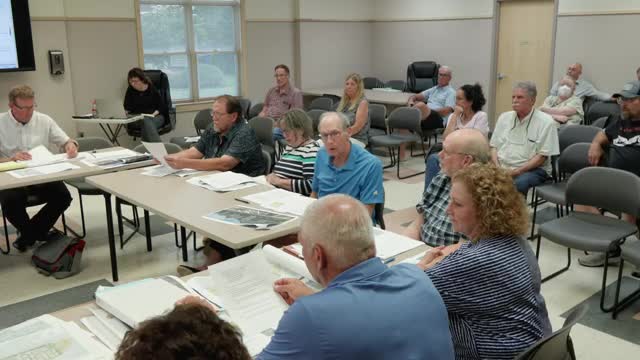Traffic Study Reveals Solutions for Congestion Crisis
June 29, 2024 | Baldwinsville, Onondaga County, New York

This article was created by AI summarizing key points discussed. AI makes mistakes, so for full details and context, please refer to the video of the full meeting. Please report any errors so we can fix them. Report an error »

In a recent government meeting, officials discussed a comprehensive traffic study focused on the proposed Browns Foundry development and its potential impact on local roadways. The study area encompasses Route 31 from Mechanic Street to the Baltimore bypass, as well as Route 370, with additional analysis of intersections along Oneida Street.
Traffic counts were collected during peak periods on March 28 and March 30, revealing that weekday morning and evening traffic volumes were generally consistent with historical data from the New York State Department of Transportation (DOT). The study indicated that traffic volumes on Route 31 and Route 370 were comparable to or slightly higher than previous counts, suggesting that the data is representative of current conditions.
Key findings highlighted the need for a traffic signal at the intersection of Oneida Street and Route 31, which would improve traffic flow, particularly during school hours. The analysis showed that while some intersections currently operate at acceptable levels, others, particularly the Mechanic Street intersection, experience significant delays, especially for left-turn movements.
The study also included an accident analysis, which found that most intersections in the area had accident rates at or below statewide averages, with only a few exceptions. Overall, the traffic study concluded that the proposed development would generate approximately 100 to 120 vehicle trips during peak hours, a figure that aligns with standard traffic generation estimates for residential units.
In response to concerns about traffic congestion, the study recommended several mitigation measures, including the installation of a traffic signal at Oneida Street, warning signage for the driveway on Route 370, and adjustments to signal timing at the Mechanic Street intersection. These measures aim to enhance safety and improve traffic flow in the area, accommodating both the proposed development and any future projects.
Officials expressed a desire to remain involved in ongoing discussions with the DOT regarding traffic management and development planning, emphasizing the importance of collaboration to address community concerns effectively.
Traffic counts were collected during peak periods on March 28 and March 30, revealing that weekday morning and evening traffic volumes were generally consistent with historical data from the New York State Department of Transportation (DOT). The study indicated that traffic volumes on Route 31 and Route 370 were comparable to or slightly higher than previous counts, suggesting that the data is representative of current conditions.
Key findings highlighted the need for a traffic signal at the intersection of Oneida Street and Route 31, which would improve traffic flow, particularly during school hours. The analysis showed that while some intersections currently operate at acceptable levels, others, particularly the Mechanic Street intersection, experience significant delays, especially for left-turn movements.
The study also included an accident analysis, which found that most intersections in the area had accident rates at or below statewide averages, with only a few exceptions. Overall, the traffic study concluded that the proposed development would generate approximately 100 to 120 vehicle trips during peak hours, a figure that aligns with standard traffic generation estimates for residential units.
In response to concerns about traffic congestion, the study recommended several mitigation measures, including the installation of a traffic signal at Oneida Street, warning signage for the driveway on Route 370, and adjustments to signal timing at the Mechanic Street intersection. These measures aim to enhance safety and improve traffic flow in the area, accommodating both the proposed development and any future projects.
Officials expressed a desire to remain involved in ongoing discussions with the DOT regarding traffic management and development planning, emphasizing the importance of collaboration to address community concerns effectively.
View full meeting
This article is based on a recent meeting—watch the full video and explore the complete transcript for deeper insights into the discussion.
View full meeting
